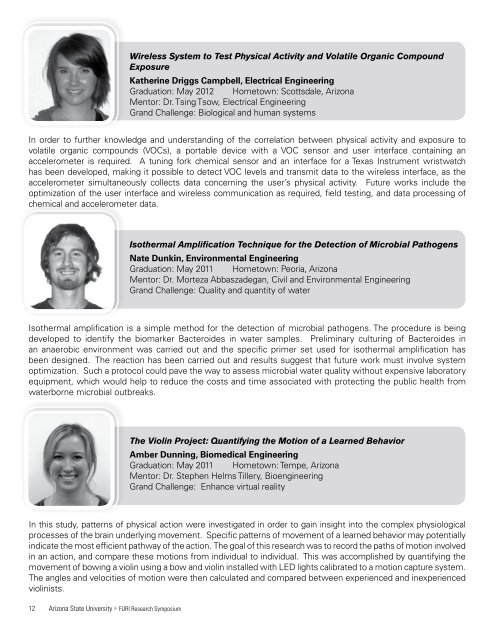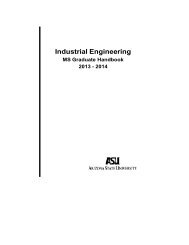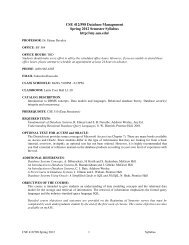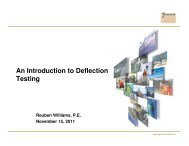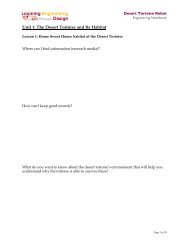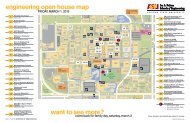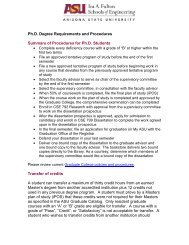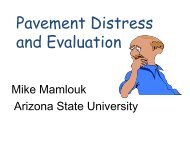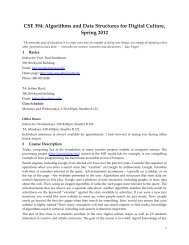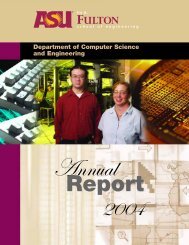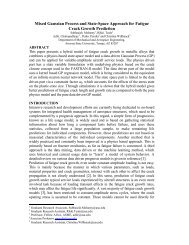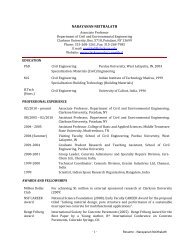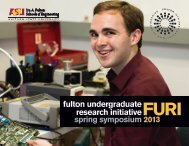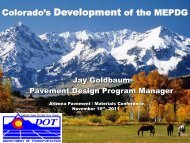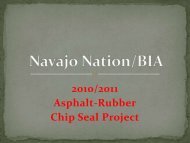Abstract Book - Ira A. Fulton Schools of Engineering - Arizona State ...
Abstract Book - Ira A. Fulton Schools of Engineering - Arizona State ...
Abstract Book - Ira A. Fulton Schools of Engineering - Arizona State ...
You also want an ePaper? Increase the reach of your titles
YUMPU automatically turns print PDFs into web optimized ePapers that Google loves.
Wireless System to Test Physical Activity and Volatile Organic Compound<br />
Exposure<br />
Katherine Driggs Campbell, Electrical <strong>Engineering</strong><br />
Graduation: May 2012 Hometown: Scottsdale, <strong>Arizona</strong><br />
Mentor: Dr. Tsing Tsow, Electrical <strong>Engineering</strong><br />
Grand Challenge: Biological and human systems<br />
In order to further knowledge and understanding <strong>of</strong> the correlation between physical activity and exposure to<br />
volatile organic compounds (VOCs), a portable device with a VOC sensor and user interface containing an<br />
accelerometer is required. A tuning fork chemical sensor and an interface for a Texas Instrument wristwatch<br />
has been developed, making it possible to detect VOC levels and transmit data to the wireless interface, as the<br />
accelerometer simultaneously collects data concerning the user’s physical activity. Future works include the<br />
optimization <strong>of</strong> the user interface and wireless communication as required, field testing, and data processing <strong>of</strong><br />
chemical and accelerometer data.<br />
Isothermal Amplification Technique for the Detection <strong>of</strong> Microbial Pathogens<br />
Nate Dunkin, Environmental <strong>Engineering</strong><br />
Graduation: May 2011 Hometown: Peoria, <strong>Arizona</strong><br />
Mentor: Dr. Morteza Abbaszadegan, Civil and Environmental <strong>Engineering</strong><br />
Grand Challenge: Quality and quantity <strong>of</strong> water<br />
Isothermal amplification is a simple method for the detection <strong>of</strong> microbial pathogens. The procedure is being<br />
developed to identify the biomarker Bacteroides in water samples. Preliminary culturing <strong>of</strong> Bacteroides in<br />
an anaerobic environment was carried out and the specific primer set used for isothermal amplification has<br />
been designed. The reaction has been carried out and results suggest that future work must involve system<br />
optimization. Such a protocol could pave the way to assess microbial water quality without expensive laboratory<br />
equipment, which would help to reduce the costs and time associated with protecting the public health from<br />
waterborne microbial outbreaks.<br />
The Violin Project: Quantifying the Motion <strong>of</strong> a Learned Behavior<br />
Amber Dunning, Biomedical <strong>Engineering</strong><br />
Graduation: May 2011 Hometown: Tempe, <strong>Arizona</strong><br />
Mentor: Dr. Stephen Helms Tillery, Bioengineering<br />
Grand Challenge: Enhance virtual reality<br />
In this study, patterns <strong>of</strong> physical action were investigated in order to gain insight into the complex physiological<br />
processes <strong>of</strong> the brain underlying movement. Specific patterns <strong>of</strong> movement <strong>of</strong> a learned behavior may potentially<br />
indicate the most efficient pathway <strong>of</strong> the action. The goal <strong>of</strong> this research was to record the paths <strong>of</strong> motion involved<br />
in an action, and compare these motions from individual to individual. This was accomplished by quantifying the<br />
movement <strong>of</strong> bowing a violin using a bow and violin installed with LED lights calibrated to a motion capture system.<br />
The angles and velocities <strong>of</strong> motion were then calculated and compared between experienced and inexperienced<br />
violinists.<br />
12<br />
<strong>Arizona</strong> <strong>State</strong> University u FURI Research Symposium


